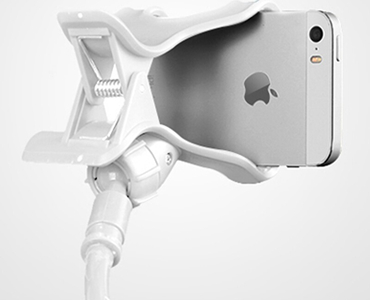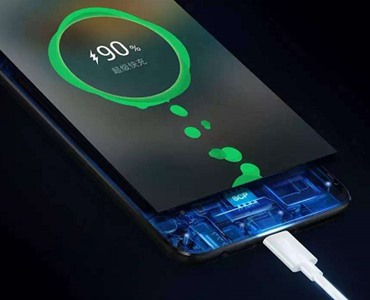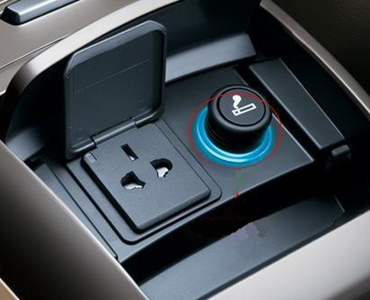938 views Yuda Electronic (HK) Technology Co.,Limited. 2018-05-18
The requirements and responsibilities for improving the power efficiency of smart phones are often improved through other components such as memory or flash memory storage. However, according to recent research by Canadian researchers, self-charging batteries are expected to emerge in the next decade.
George Demopoulos, a professor of mining and materials engineering at McGill University, said that although lithium-ion batteries have made mobile devices popular, they still require frequent recharging due to limited energy density.
This limitation has prompted researchers’ interest in developing portable solar chargers. However, Demopoulos pointed out that due to complicated circuit problems, it is difficult to miniaturize these hybrid devices.
Demopoulos has been working with Hydro Quebec since 2010 to manufacture lithium phone batteries and solar cells. In 2014, he applied for a vacation study at McGill University, where IREQ and postdoctoral researcher Andrea Paolella tested the idea of using light collection to create a self-charging battery, just like a dye-sensitized solar cell. Demopoulos has been engaged in research and development related to dye-sensitized solar cells since 2007, and thus began to be indissoluble with the battery.
In the early stages, research in this area focused on a single photoelectrode—a half-cell irradiated with a light bulb as a demonstration to see if the battery can absorb light energy and store electrical energy. But Demopoulos said that what the researchers want to know is that the two (bulb, battery) devices can be combined into one? After a few weeks of photoelectrode irradiation, we began to see the flow of current,” Demopoulos praised Paolella’s patience because nothing happened in the first two weeks.

After receiving funding from the Canadian National Natural Science and Engineering Research Council (NSERC), the research team is currently working on the second phase of the project. In the April 2017 issue of Nature Communications, researchers detailed how dye-sensitized solar cell technology can be combined with lithium-ion materials to explore the process of charging light-assisted cells.
Basically, lithium iron phosphate can be effectively used as a reversible redox agent for the regeneration of dyes. Researchers’ research results describe the possibility of promoting the design principle of photo-rechargeable lithium-ion batteries.
The first stage of the experiment was without actual equipment and was performed in a humidity-free drying chamber. In addition, various physical components have never been packaged in a single container. “Not just light, oxygen in the experiment also plays a key role.” Demopoulos said: “Oxygen cannot exist in the battery. Therefore, the next stage is to try to replace the oxygen and then further package it.”
He said that the research plan is expected to take about five to ten years. “We will need to redesign mobile devices that absorb light.” For example, the screen can absorb light.
Karim Zaghib, director of energy storage and management at IREQ, said that the electrodes have been designed to absorb light, and NSERC’s funding will give them the opportunity to close the gap and prove the possibility of light-rechargeable batteries. The agency has been engaged in lithium battery-related business for 50 years; Zaghib personally worked there for 22 years. Currently, the proposed new charging method is a key challenge that Zaghib and other researchers are working to solve. He said: “Everyone wants to charge quickly. We must find another source.”
He said that having a device that can simultaneously collect energy and store it has been a subject that has been repeatedly discussed. Battery size is no longer a problem because researchers use ion phosphate batteries instead of lithium batteries. “The problem is not the energy density, we have a solution.” Zaghib said: “The question is how to quickly charge.” And the other challenge is to allow the battery has enough charge times, the goal is to reach 500 in the next five years Secondary charge and discharge cycles.
It is expected that in the next decade, more and more smart homes will be powered by solar energy. Self-recharging batteries are also expected to come in handy at home and be charged by sunlight during the day and used at night. Although the current research is still centered on small-sized batteries, Zaghib is optimistic about the potential of developing larger batteries of 10-20 kilowatt hours (kWh) for applications such as energy storage. He said: “Now, if you want to generate electricity in your home, you must install solar panels on the roof, and put the battery in the home basement or garage.”
The concept of a self-charged battery means that the solar power system in the home only needs to be placed on the roof. Zaghib said that this concept can even be imported into the car, but more consideration is needed because the car battery is usually placed on the chassis. In short, “We are thinking about some new designs,” Zaghib said.

Cell phone accessories wholesale business can get high profits. But the market is fierce. Big bra...

Does fast charging reduce phone battery life? In order to allow everyone to understand this matt...

How to install the car charger: 1. Insert the USB power adapter into the car cigarette lig...